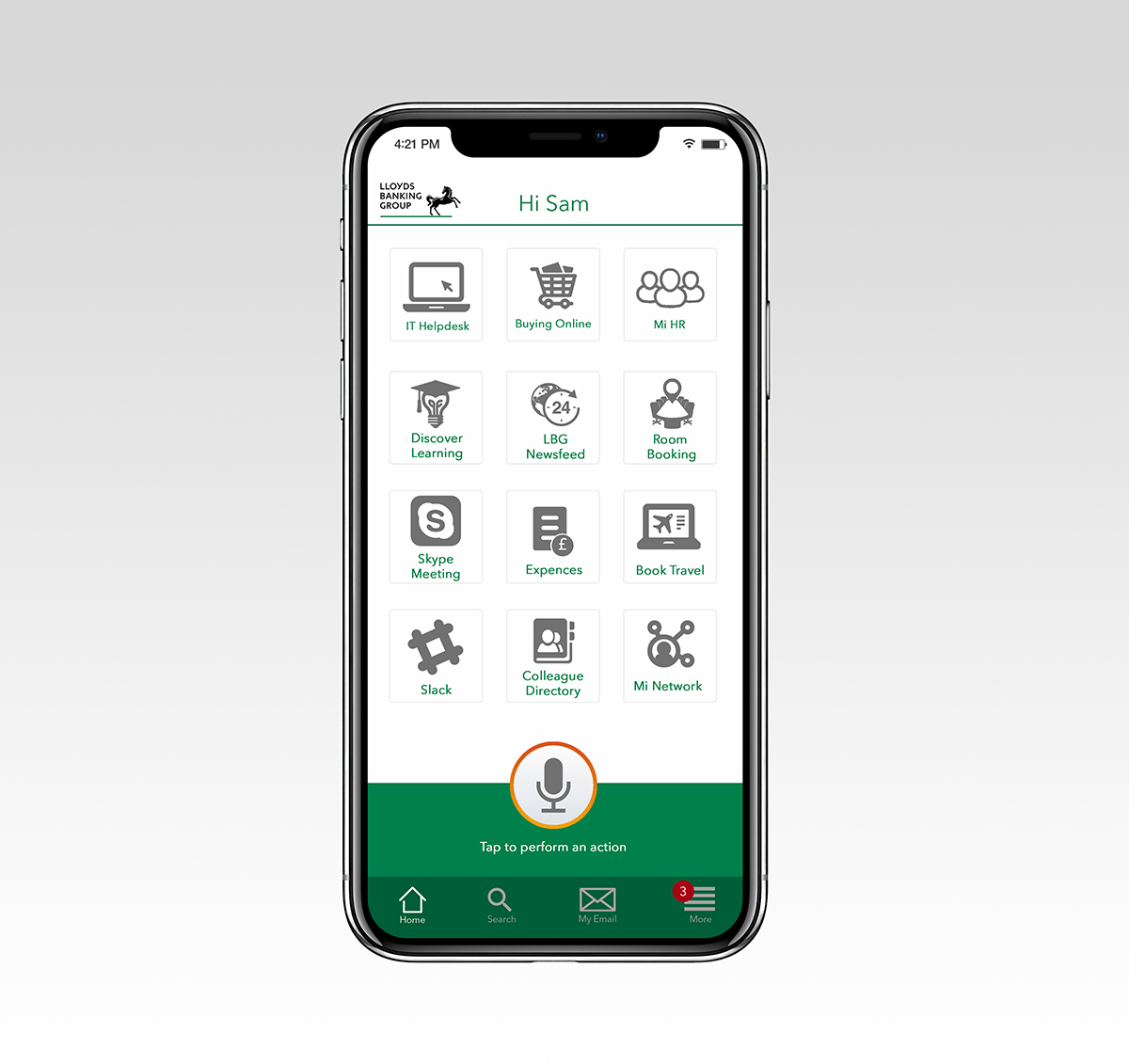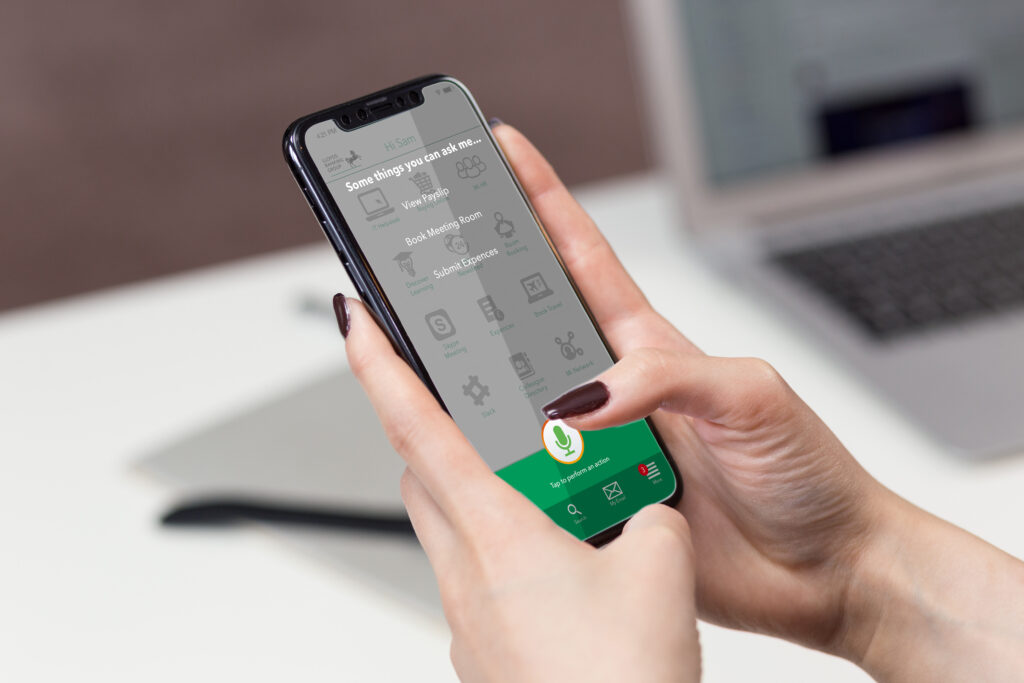Understand what matters to the user
There was a challenge set within the Group as part of a hackathon aimed at making colleagues lives easier. Within Lloyds Banking Group, there are a vast array of applications, 4000 enterprise 75,000 end-user computing (EUCs) and 20,000 micro-processes. All of this adds up to a lot of wasted time navigating and interacting with them all.
My idea as Lead Designer puts a personal assistant in the hand of every Lloyds Banking Group Employee. Users would be able to interact with any application via voice control, single biometric sign-on to avoid multiple passwords. Utalising APIs, to update workflows to make them quicker and more productive. Then finally using robotics and AI to learn repeat actions.
As part of the hackathon, I had to pitch my idea to the room (200 Colleagues) to obtain buy-in and to allow my idea to proceed. I then had 48 hours to choose my team and create a working version of the application.
Ideas to find opportunities that meet what matters to the user
I had prepared some wireframes and visual mockups as part of my pitch, and I was able to share these with my team of engineers. I first created an interview discussion guide which helped with the validation of my ideas.
I then conducted the user interviews with colleagues that worked across different areas of Lloyds Banking Group, to understand their pain points with existing solutions. I learnt a lot from the discussions and also helped me to create a prioritised features list that aligned with our users’ intentions.
Based on the interview discussions and the limited time I had to create a working application, I decided to design and build working the following features:
- View payslip
- Search and find a person on the colleague directory
- Order some office supplies
We then all worked out what was achievable within the time frame, and then I delegated tasks out to each of the team members.
Design and develop a solution through test and learn
Due to time constraints, I went to straight to high fidelity prototypes; this allowed the team of engineers to start right away and to build something we could put in front of the user that worked. We were then able to start user testing and iterating within the first 24 hours.
After 36 hours we then had to down tools, and I had to prepare a presentation to present to a selection LBG directors.
A solution that delivers and measures customer value, business value and quality.
The finished product won best technical idea and best app and has now been put forward development.



